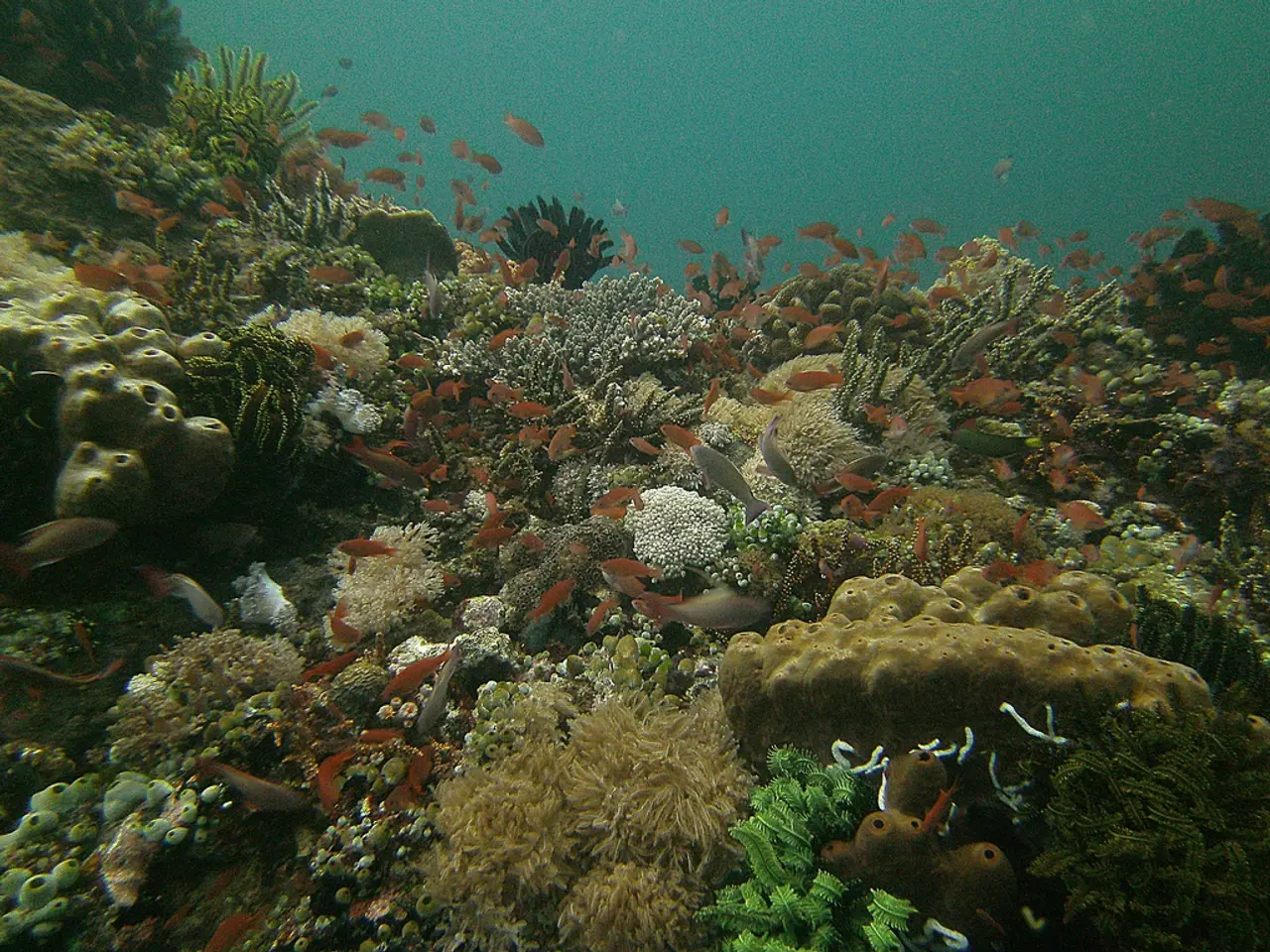Residing in proximity to coastlines contaminated with microplastics may potentially harm your cardiovascular health.
Living near microplastic-infested coastlines? The heartache might be real
Picture this: you're sipping on your morning cup of joe, gazing at the breathtaking ocean view. Who knew that sunrise over the sea could be a recipe for disaster? A groundbreaking study initiated a stir, suggesting that the idyllic ocean view might fossilize your heart. Yes, you heard that right - your dream coastal abode could be a ticking time bomb for cardiovascular diseases!
Turns out, those minuscule plastic particles, smaller than a fingertip, that we've grown accustomed to finding in our water - from the tap to the ocean - might not just inhibit sea animals but also human health. In the United States, new research unearths a distressing connection between where you live and your health status, particularly for those residing near heavily polluted coastlines.
"Cue the alarm bells!" says Sarju Ganatra, a cardiology whiz, when elaborating on the study's implications. "For the first time, we have evidence to suggest a link between plastic pollution and chronic health issues." So, what's the deal with these microplastics causing a heartache?
Being the friendly and curious beings we are, we put on our sleuthing hats to find out more. Here's what we discovered:
Microplastics, those minuscule yet mighty plastic pieces, are primarily generated when larger plastic waste breaks down over time. It sprouts from common sources such as food packaging, synthetic clothes, cosmetics, and paint. These particles penetrate marine ecosystems and, through a process called seawater intrusion, make their way into groundwater resources and contaminate groundwater aquifers in coastal areas.
To shed some light on the issue, researchers segmented U.S. coastal counties based on microplastic pollution levels within 200 nautical miles of the shoreline. They then compared rates of cardiometabolic diseases, including Type 2 diabetes, coronary artery disease, and stroke, among these regions.
Guess what? People inhabiting coastal counties plagued with very high levels of marine microplastic pollution experienced higher rates of the above-mentioned cardiometabolic diseases compared to areas with lower pollution.
The study reveals that people living in counties with intensely microplastic-polluted waters had:
- An 18% higher possibility of Type 2 diabetes
- A 7% increased risk for coronary artery disease
- A 9% greater chance of strokes
But wait! The association between high microplastic pollution levels and cardiometabolic diseases remains consistent even after accounting for confounding factors such as age, gender, access to doctors, socioeconomic status, and environmental considerations.
It's essential to note that microplastic exposure doesn't stop at the coastline. "Just because you don't live by the sea doesn't mean you're safe," warns Ganatra. "Microplastics have a tenacious grip - they're lurking in our drinking water, food, especially seafood, and even the air we breathe."
The research team is collaborating to conduct follow-up studies deciphering the impact of microplastic exposure on biological markers of inflammation, stress on the cardiovascular system, and more.
"The growing body of evidence demonstrates that our carelessness often comes back to bite us in the form of poisoned environments and compromised health," laments Ganatra. "We must mobilize policymakers to treat plastic pollution as an environmental catastrophe as well as a potential health crisis."
This research was published in none other than the prestigious American Heart Association.
- News ### Drifting in a Sea of Microplastics: Navigating Public Health Concerns
Originally published by Cosmos as Living near microplastic-laden coastlines could be doing your heart no favors
Enrichment Data:Health Risks Connected to Microplastics:
- Heart Disease: Microplastics can cause chronic inflammation and oxidative stress in the body, which, in turn, contributes to blood vessel damage, leading to cardiovascular diseases like heart attacks, stroke, and coronary artery disease[1].
- Metabolic Diseases: Prolonged exposure to microplastics can lead to disruptions in metabolic functions, raising the risk for developing Type 2 diabetes[2].
- Children's Health: Exposure to microplastics during critical developmental stages may affect brain development and endocrine disruption, potentially leading to long-term health issues[3].
- Reduced Fertility: Research indicates microplastics may decrease sperm quality and impact female reproductive health, resulting in fertility issues[4].
- Cancers: Some studies suggest microplastics can act as a vector for estrogenic chemicals, increasing the risk of hormone-related cancers, such as breast and endometrial cancers[5].
Exposure Pathways:
- Eating Infected Seafood: Consuming contaminated seafood can be one of the primary ways humans get exposed to microplastics[3].
- Drinking Contaminated Water: Drinking water, including groundwater, can be another common source of microplastic exposure[2].
- Respiration: Particles can be inhaled and lodge in our respiratory system, potentially leading to lung irritation and inflammation[1].
- Contamination of Food Packaging: The migration of microplastics from food packaging into food content can also expose humans to the harmful particles[6].
Microplastic Research and Innovation:
- Bioplastics: Advancements in bioplastics represent one potential solution to mitigate the issue of unrestrained plastic pollution. Bioplastics are biodegradable and potentially less likely to break down into microplastics[1].
- Eco-friendly Packaging Alternatives: Shift towards sustainable packaging alternatives, such as plant-based materials or paper, can help limit the production of microplastics[2].
- Microplastic Clean-Up Initiatives: Organizations and governments are investing in large-scale microplastic clean-up efforts to combat the ever-growing problem[7].
- Waste Management Strategies: Improving waste management practices and enforcing recycling initiatives can help reduce plastic waste accumulation, thus limiting the production of microplastics[7].
Summary:
Living near microplastic-ridden coastlines comes with the risk of various health concerns, including cardiovascular diseases, metabolic disorders, reproductive issues, and even cancer. The prevalence of microplastic pollution can increase through various exposure pathways, including the consumption of infected seafood and drinking contaminated water. Efforts to combat microplastic pollution involve investment in biodegradable solutions, sustainable packaging alternatives, and large-scale clean-up initiatives, as well as improved waste management practices and recycling programs.
- In light of new research, living near heavily polluted coastlines has been linked to a higher risk of cardiometabolic diseases, such as Type 2 diabetes, coronary artery disease, and stroke.
- Microplastics, generated from various sources such as food packaging, clothing, cosmetics, and paint, can penetrate marine ecosystems and groundwater resources, potentially impacting human health through seawater intrusion and other exposure pathways.
- The research on the health risks associated with microplastics is ongoing, and investigations are focusing on the impact of these harmful particles on biological markers of inflammation, stress on the cardiovascular system, and more. The study's findings highlight the need for treating plastic pollution as an environmental catastrophe and a potential health crisis.





